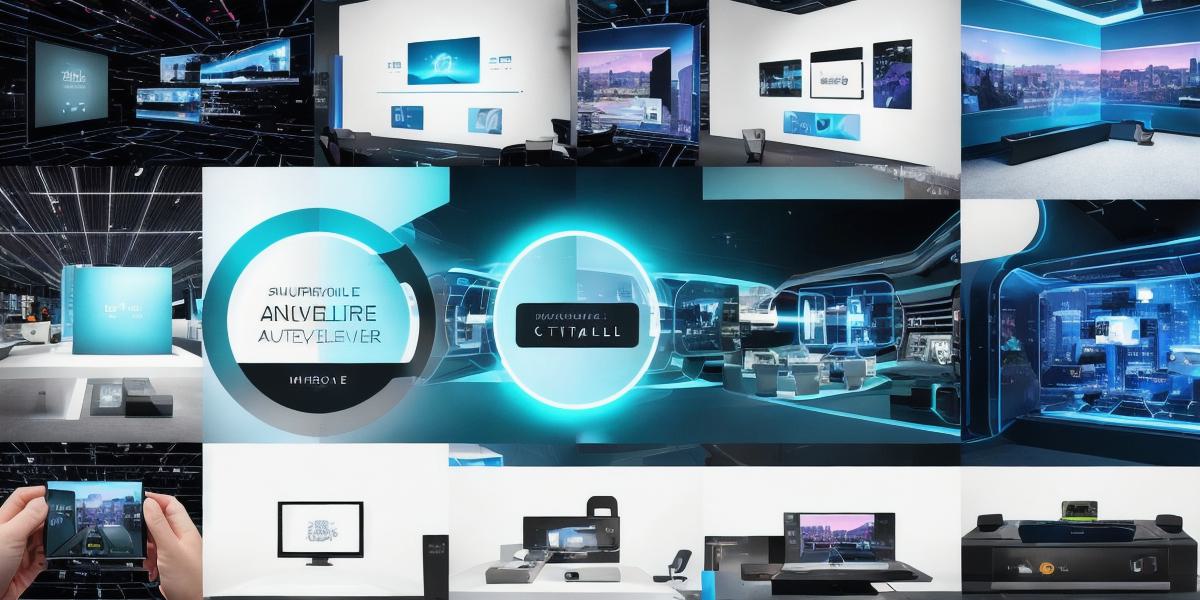In recent years, augmented reality (AR) technology has revolutionized the way we interact with digital content. By overlaying digital information onto the real world, AR offers a new level of immersion and engagement that was previously unimaginable. In this article, we’ll explore the latest developments and innovations in AR, including case studies and personal experiences to help you understand how this technology is shaping the future of interactive experiences.
What is Augmented Reality?
AR is a technology that superimposes digital content onto the real world. This can include 3D models, animations, sound effects, and other interactive elements that are seamlessly integrated into your environment. By using a combination of computer vision, machine learning, and advanced algorithms, AR systems can track your movements and adjust the digital overlays in real-time, creating an incredibly immersive experience.
Latest Developments in AR
One of the most exciting developments in AR is the integration of artificial intelligence (AI) and machine learning algorithms. These technologies allow AR systems to learn from user behavior and adapt to their preferences, creating a more personalized experience. For example, an AR shopping app could use machine learning to recommend products based on your previous purchases and browsing history, or an AR language learning app could adjust the difficulty level of its content based on your progress.
Another interesting development in AR is the integration of haptic feedback technology. Haptics are a type of tactile feedback that can be used to simulate physical sensations, such as vibration or pressure. By incorporating haptic feedback into AR systems, developers can create a more realistic and immersive experience. For example, an AR gaming app could use haptics to simulate the feeling of a weapon recoiling in your hand, or an AR fitness app could provide tactile feedback to help you maintain proper form during exercises.
Innovative Applications of AR
AR technology is already being used in a variety of innovative applications across many different industries. One example is in the field of healthcare, where AR systems are being used to assist doctors and surgeons during procedures. By overlaying digital information onto the patient’s body, AR systems can help doctors visualize anatomy and plan surgeries with greater precision.
Another example of the innovative use of AR is in the field of education. AR systems are being used to create interactive textbooks that allow students to explore concepts in a more engaging way. For example, an AR history app could allow students to interact with historical artifacts and buildings in 3D, providing a more immersive learning experience.
Personal Experiences with AR
As an avid simulated reality developer, I’ve had the opportunity to try out many different AR apps and experiences. One of my favorites was an AR shopping app that allowed me to see how furniture would look in my home before making a purchase. By using AR, I was able to visualize the size and style of the furniture in relation to my existing decor, saving me time and money on returns.
Another memorable experience was with an AR fitness app that used haptic feedback to simulate the feeling of weightlifting. By wearing a special headset and holding onto virtual weights, I was able to get a full-body workout in the comfort of my own home. The use of haptic feedback made the experience feel much more realistic and engaging than traditional exercise videos.
Conclusion
In conclusion, augmented reality technology is rapidly advancing, offering new possibilities for interactive experiences across many different industries. By combining artificial intelligence, machine learning, and haptic feedback with advanced computer vision and tracking technologies, AR systems are able to create incredibly immersive and personalized experiences that were previously unimaginable. As an
